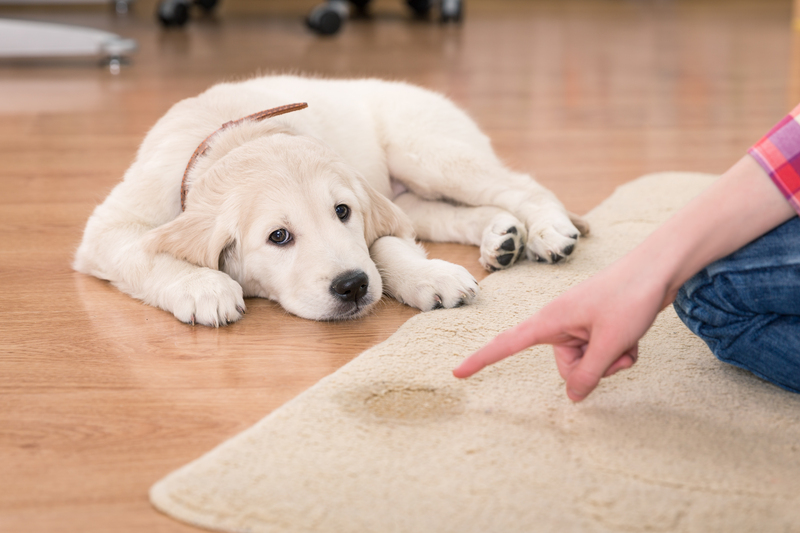Keep Your Velvet Curtains Pristine with These Washing Tips
Posted on 18/05/2025
Keep Your Velvet Curtains Pristine with These Washing Tips
Velvet curtains add luxury, elegance, and warmth to any room. Their rich texture and deep colors create a striking visual impact. However, keeping velvet curtains clean and looking their best can be a challenge. Whether you're looking to remove dust, address stubborn stains, or simply want to refresh your velvet drapes, proper care is essential. In this comprehensive guide, you'll learn effective washing tips and maintenance advice to keep your velvet curtains pristine for years to come.
Why Velvet Curtains Need Special Care
Velvet is a distinct fabric crafted by weaving two layers of material together and then cutting them apart to create a plush pile. This unique structure is what gives velvet its soft texture and luminous appearance. But, it also means that velvet is more susceptible to flattening, matting, and watermarks if not handled properly.
Preserving the beauty of velvet drapes requires specific techniques and gentle products. Harsh cleaning or improper handling can damage fibers, make creases permanent, or dull the fabric's signature shine.
Common Types of Velvet Used for Curtains
- Cotton velvet: Traditionally soft, absorbent, and prone to crushing
- Synthetic velvet (like polyester): More resilient, slightly less plush, but easier to maintain
- Silk velvet: Exquisitely luxurious yet exceptionally delicate (often requires professional cleaning)

Pre-Wash Velvet Curtain Care: What You Should Know
Before diving into the cleaning process, you should always review the care label on your velvet curtains. Some types of velvet are strictly dry-clean only, while others can handle careful hand or machine washing. Ignoring this step may result in irreversible damage.
- Check for colorfastness: Test a hidden corner with a damp cloth to ensure the dye doesn't bleed.
- Remove dust and debris: Use a soft brush or vacuum with an upholstery attachment to gently whisk away surface dust and pet hair.
- Spot clean first: Address stains before a general wash to prevent permanent setting.
Hand-Washing Velvet Curtains
Hand washing is the safest method for most velvet curtain panels. Here's how to do it without harming the plush pile:
- Fill a clean bathtub or basin with cold to lukewarm water. Add a small amount of mild detergent that is suitable for delicate fabrics.
- Submerge the velvet curtains and gently agitate with your hands. Never wring, twist, or scrub the material.
- Let soak for 10-15 minutes. This will help lift dirt and residual oils.
- Rinse thoroughly until the water runs clear, gently pressing (not wringing) the fabric to remove suds.
- Drying: Lay the velvet curtain flat on a thick towel and roll up, pressing lightly to extract water. Avoid hanging while wet, as this can cause stretching and deformation.
- Once most water is removed, hang the curtain to dry in a well-ventilated area, away from direct sunlight and heat sources.
Can You Machine Wash Velvet Curtains?
It depends! Many modern synthetic velvets can tolerate gentle machine cycles. However, always consult the manufacturer's label first.
- Use a mesh laundry bag to protect the fabric from abrasion and distortion.
- Set your washer to cold water and select a delicate cycle with minimal spin.
- Use a gentle detergent formulated for delicates or baby garments. Avoid bleach and softeners!
- Remove promptly after the cycle ends to prevent wrinkles.
- Dry flat or line-dry indoors. Never tumble-dry velvet; heat damages the pile.
Tips for Spot Cleaning Velvet Curtains
For isolated spills or marks, spot-cleaning preserves the rest of the panel and reduces risk of overall shrinkage or watermarking.
- Blot the stain immediately with a clean, dry, white cloth or paper towel to absorb as much liquid as possible. Do not rub--this drives the stain further into the fibers.
- Mix a mild detergent with cold water, dampen a lint-free cloth, and gently dab at the stain.
- Blot again with a dry towel to remove moisture, then let air dry.
- If the mark persists, consult a professional upholstery or curtain cleaner.
How to Dry Velvet Curtains After Washing
Proper drying is key in maintaining the texture and shape of your velvet drapes:
- Lay flat whenever possible, ideally between two towels to absorb excess water.
- Reshape the curtain by gently smoothing seams and edges during drying.
- Avoid sunlight and direct heat, which can cause fading and brittle piles.
- Hang only when partially dry and ensure rods aren't sharp or rough to prevent snagging.
Keeping Velvet Curtains Dust-Free Between Washes
To preserve the freshness of velvet drapes and minimize the need for washing:
- Vacuum gently on the lowest suction setting weekly with a soft brush head to prevent dust buildup.
- Use a lint roller or velvet brush to remove pet hair and lint.
- Shake out curtains outdoors to loosen dirt if possible (carefully, to avoid wrinkling).
When to Choose Professional Dry Cleaning
While some velvet curtains can be washed at home, others require professional cleaning for several reasons:
- You own antique, silk, or lined velvet curtains.
- The curtains feature complex pleats, embroidery, or fragile backing.
- The manufacturer's label recommends dry-clean only.
- Stubborn stains resist home removal techniques.
Professional dry cleaning ensures deep cleaning without damaging the pile or structure of your prized drapes.
How to Maintain Velvet Curtains' Luster After Cleaning
Regular maintenance and a few finishing touches will restore and preserve the elegant look of your velvet curtains after washing:
- Brush the pile gently in the direction of the nap using a soft-bristled brush or a velvet brush. This revives the "loft" and luster of the fabric.
- Light steam treatment helps remove creases and set the fibers upright. Hold a garment steamer a few inches away and never saturate the curtain.
- Hang promptly to allow gravity to ease folds and wrinkles. Avoid folding or pressing the fabric.
FAQs: Cleaning and Caring for Velvet Curtains
Can I iron velvet curtains?
No, you should avoid ironing velvet. Intense heat and pressure crush the pile and leave shiny marks. Instead, use gentle steaming from the underside or in the direction of the nap to relax wrinkles.
How often should I wash velvet drapes?
Wash velvet curtains only when necessary--typically once a year or when visibly soiled. Overwashing can degrade fibers and dull their sheen.
What products are best for cleaning velvet?
Mild, bleach-free detergents are ideal for hand- or machine-washable velvet. Avoid heavy-duty cleaners, enzyme-based solutions, or anything containing bleach.
How do I store velvet curtains?
Hang velvet drapes in a closet or store flat if possible. Avoid folding, which may leave permanent creases.

Key Velvet Curtain Washing Tips At a Glance
- Always check care labels before cleaning your luxury curtain panels.
- Hand-wash or use delicate machine cycles with cold water for most synthetic or cotton velvets.
- Never wring, twist, or tumble-dry velvet--it can damage the plush pile!
- Spot-clean spills and stains promptly using gentle blotting rather than rubbing.
- Dry curtains flat initially and hang only when mostly dry to maintain shape and prevent stretching.
- Brush the nap with a velvet brush after each wash to restore shine.
- Choose professional dry cleaning for antique, silk, or heavily decorated velvet curtains.
- Vacuum regularly and keep sunlight exposure low to reduce fading and dust buildup between washings.
Conclusion: Keep Your Velvet Curtains Pristine and Luxurious
With the right approach, keeping velvet curtains pristine is achievable. Whether you're freshening up a living room or maintaining bedroom drapes, these expert washing tips will help extend the life and beauty of your velvet curtains. Remember to always refer to care labels, use gentle cleaning methods, and opt for professional help when in doubt. Your velvet drapes will reward you with years of luxury, rich color, and timeless elegance.
By following these comprehensive velvet curtain care tips, you'll enjoy a cleaner, healthier, and more beautiful home environment. For more cleaning guides and luxury home maintenance tips, be sure to explore our blog and stay inspired!




